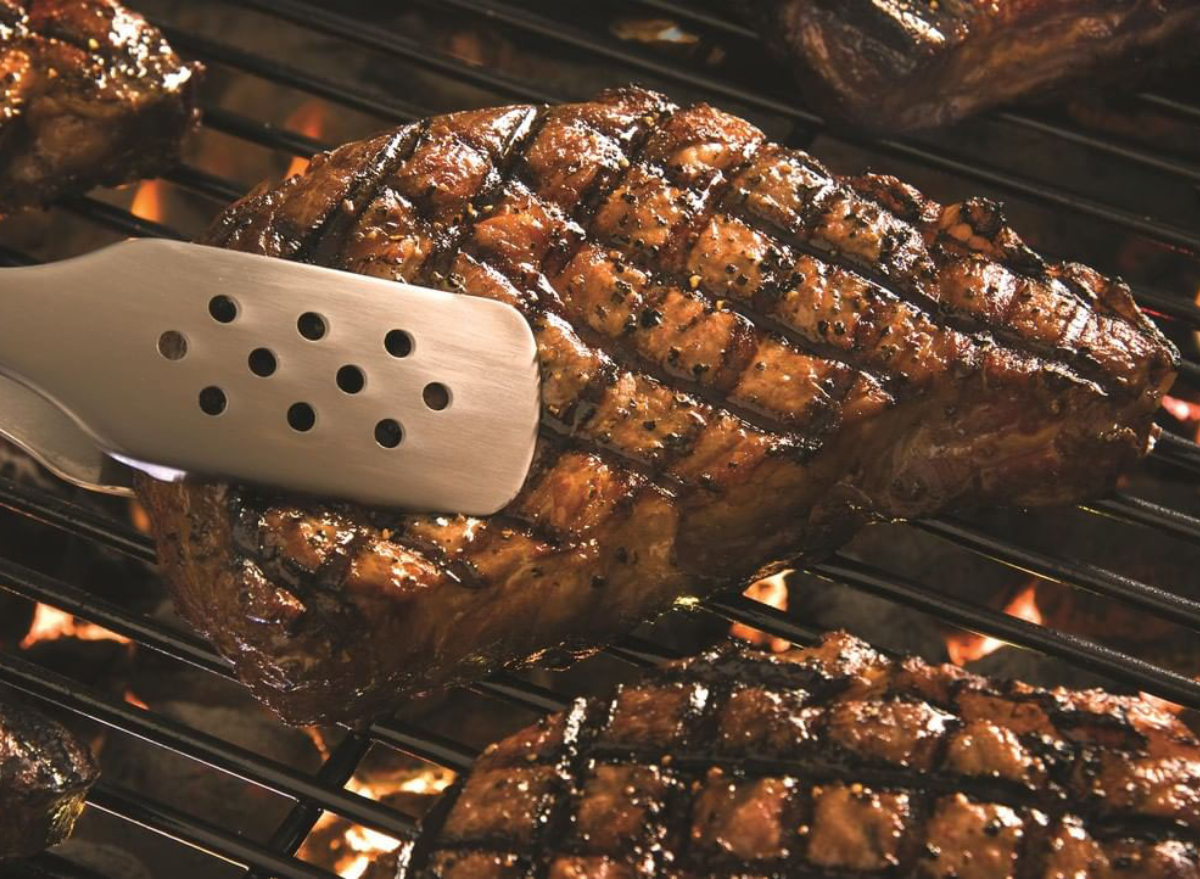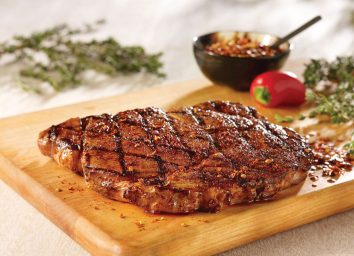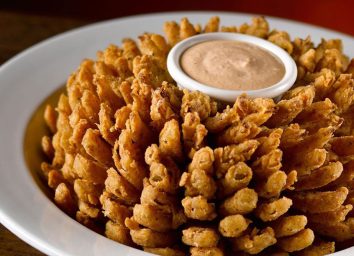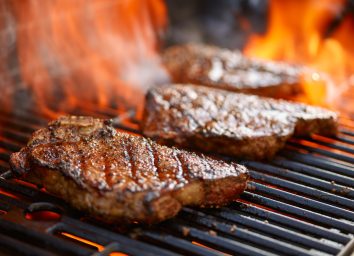4 Truths About Steakhouse Chains That Will Make You Lose Your Appetite
Everyone associates hot dogs with New York City, but New Yorkers were gobbling down steaks long before the hot dog became a Madison Avenue fixture.
In the 19th century, “beefsteak dinners” were an entirely male-dominated domain. Up until around 1920, men would fill large halls, forgo utensils of all kinds, and try their hardest to consume as much steak and beer as humanly possible.
When did forks and knives come into play? The New Yorker writer Joseph Mitchell wrote in 1939 that “it didn’t take women long to corrupt the beefsteak,” by incorporating napkins, utensils, salads, Manhattan cocktails, and fruit cups.
In that same piece, Mitchell went on to bemoan the influence of women on men’s steak-eating habits, writing: “..women do not esteem a glutton, and at a contemporary beefsteak it is unusual for a man to do away with more than six pounds of meat and thirty glasses of beer.”
So, just to be clear, around six pounds of meat and thirty glasses of beer in one sitting was apparently the definition of moderation back in 1939.
Napkins and forks may not be very masculine, but their addition to the steak eating equation proved favorable (and profitable) in the long run. Per The New York Times, “the steakhouse became the quintessential New York restaurant, a gruff, comfortable sort of place where people could revel in everything they liked about themselves.”
Indeed, the modern version of the steakhouse is more than any old restaurant or diner by the side of the road. We visit steakhouses on big occasions, or when we have something worth celebrating. Steakhouses are about the experience, not just the food. Of course, in many cases that also means a larger bill by the end of the evening.
Just like any other corner of the food industry, there’s a darker side to steakhouse chains. Keep reading to learn four surprising truths about steakhouse chains.
And don’t miss 5 Truths About the Fast-Food Industry That Will Make You Lose Your Appetite.
Outback isn’t really Australian
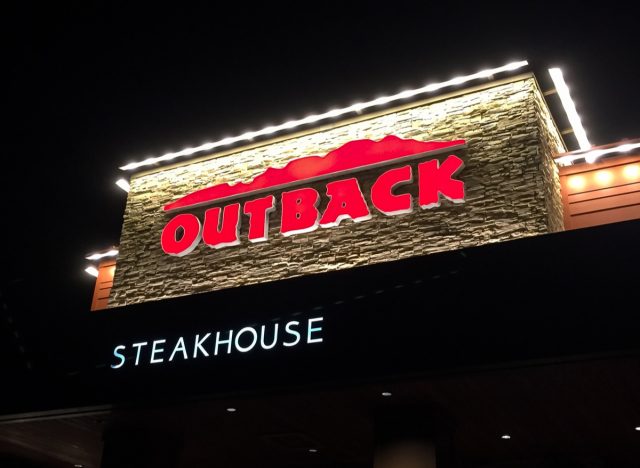
Outback presents itself as a steakhouse with an Australian twist, but the chain was founded in Tampa, Fla. in 1988. In fact, at the time the first Outback was opened, none of the founders had ever even been to Australia. Supposedly their idea for an Australian-themed restaurant at least partially stemmed from the popular 1986 film “Crocodile Dundee.”
It’s one thing to borrow a few Australian stereotypes, but what about the food? Surely Outback’s menu items are authentically Australian, right? Wrong. There’s no such thing as “shrimp on the barbie” or “the bloomin’ onion” in Australia.
Probably Outback’s biggest Australian faux pas, however, came in 2017. A quick history lesson: Modern-day Aboriginal Australians are the descendants of the continent’s first inhabitants. In other words, it doesn’t get any more authentically Australian.
Well, you can understand their outrage when Outback started marketing their “bloomin’ onion” as an “Outback Ab-original.” Social media took note quickly, calling the term distasteful and borderline racist. Outback quickly apologized, but it’s yet another example of how disconnected the chain is from its supposed “inspiration.”
Ruth’s Chris & $20 million of COVID relief funds
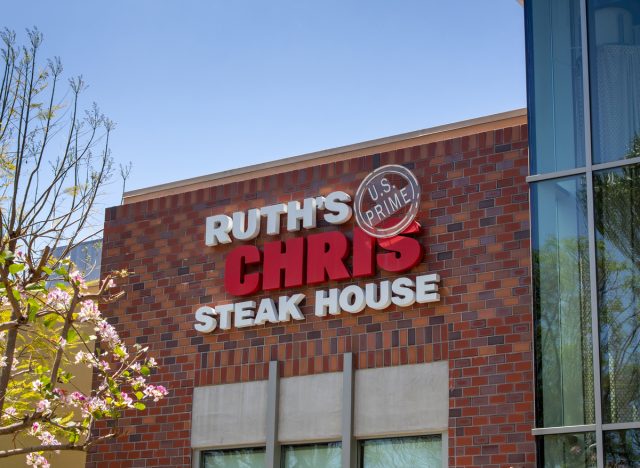
Ruth’s Chris Steak House operates over 100 restaurants across North America, employs thousands of people, and earned $468 million in 2019 ($42 million in profit).
So, people were understandably confused and outraged when it came to light that the company received $20 million (!) in COVID-19 economic “relief funds” from the government’s Paycheck Protection Program (PPP) in 2020.
Managed by the Small Business Administration, the PPP started as a $349 billion fund to help small businesses employing less than 500 people attain low-interest loans during the pandemic. Ruth’s Chris certainly does not fit that description.
Even worse, just two weeks after launching, the PPP ran out of money. Where did all those billions go? Many large businesses used loopholes to grab a piece of the monetary pie. Regarding Ruth’s Chris specifically, the company used two restaurant locations employing less than 500 workers to “qualify” for two $10 million payouts (one per location).
It didn’t take long for news outlets to take note. Here’s what GQ had to say: “Ruth’s Hospitality Group successfully applied for the maximum $10 million in PPP loans for two of its properties, even as the company reports that it has furloughed a ‘significant number of field and home office team members.'”
Oh, and the company also had $86 million in cash reserves when it applied for the PPP loans. After a petition quickly collected over 260,000 supporters, Ruth’s Chris announced they would return the $20 million in loans.
Well-done equates to worst meat
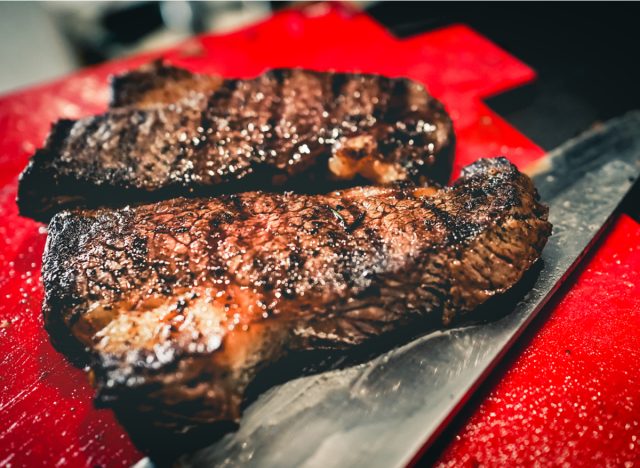
Before the late, great Anthony Bourdain became famous he was just another chef trying to get by in the culinary underbelly of New York City. Bourdain’s big break came in 1999 when The New Yorker published an article he had written and sent in for consideration.
The piece, titled “Don’t Eat Before Reading This,” was refreshingly honest about Bourdain’s time in the restaurant industry. Here’s what he had to say about well-done steaks: “People who order their meat well-done perform a valuable service for those of us in the business who are cost-conscious: they pay for the privilege of eating our garbage.”
Bourdain goes on to describe a kitchen tradition called “save for well-done.” Basically, whenever chefs find “a particularly unlovely piece of steak—tough, riddled with nerve and connective tissue, off the hip end of the loin, and maybe a little stinky from age,” they usually save it for when a customer orders a well-done steak.
Granted, that article is from over 20 years ago. The tradition of serving lesser meat to patrons ordering well-done steak, however, appears to have stood the test of time.
Here’s what one former steakhouse employee posted to Reddit a few years ago when asked if the well-done “myth” is true: “Honestly… yes. We sort steaks to cook all at the same temp, at the same time. So yeah you will get a crappier cut to cook at the same time as your super nice, rare cut.”
A bizarre Saltgrass Steakhouse server incident
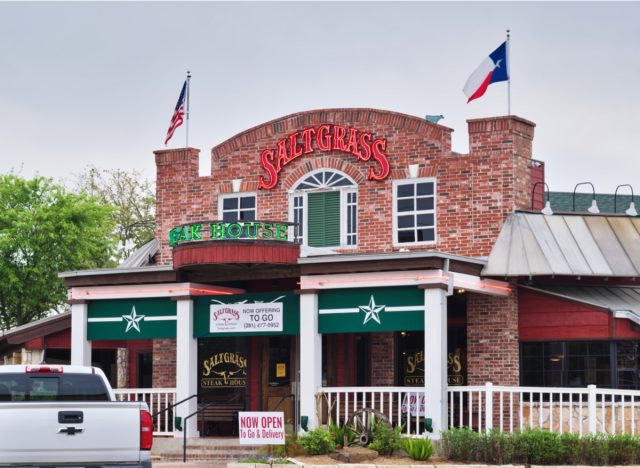
This is a steakhouse story that proves there’s validity to the saying truth is stranger than fiction. Saltgrass operates over 80 steakhouses all over the country. In 2018, a server at a Saltgrass location in Odessa, Texas made headlines after reporting that a customer had left a racist remark on their receipt.
As expected, Saltgrass immediately released a statement in support of their employee. Here’s where things get strange.
Just a few days after the alleged incident it came to light that the server had made up the entire story.
At the time, Saltgrass SteakHouse COO Terry Turney released this statement: “After further investigation, we have learned that our employee fabricated the entire story. The customer has been contacted and invited back to our restaurant to dine on us. Racism of any form is intolerable, and we will always act swiftly should it occur in any of our establishments. Falsely accusing someone of racism is equally disturbing.”
